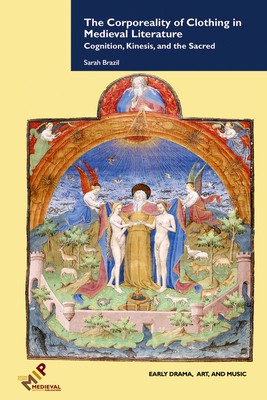
- We will send in 10–14 business days.
- Author: Sarah Brazil
- Publisher: Medieval Institute Publications
- ISBN-10: 1580443575
- ISBN-13: 9781580443579
- Format: 16 x 23.6 x 1.5 cm, kieti viršeliai
- Language: English
- SAVE -10% with code: EXTRA
Reviews
Description
Every known society wears some form of clothing. It is central to how we experience our bodies and how we understand the sociocultural dimensions of our embodiment. It is also central to how we understand works of literature. In this innovative study, Brazil demonstrates how medieval writers use clothing to direct readers' and spectators' awareness to forms of embodiment. Offering insights into how poetic works, plays, and devotional treatises target readers' kinesic intelligence--their ability to understand movements and gestures--Brazil demonstrates the theological implications of clothing, often evinced by how garments limit or facilitate the movements and postures of bodies in narratives. By bringing recent studies in the field of embodied cognition to bear on narrated and dramatized interactions between dress and body, this book offers new methodological tools to the study of clothing.
EXTRA 10 % discount with code: EXTRA
The promotion ends in 21d.22:11:22
The discount code is valid when purchasing from 10 €. Discounts do not stack.
- Author: Sarah Brazil
- Publisher: Medieval Institute Publications
- ISBN-10: 1580443575
- ISBN-13: 9781580443579
- Format: 16 x 23.6 x 1.5 cm, kieti viršeliai
- Language: English English
Every known society wears some form of clothing. It is central to how we experience our bodies and how we understand the sociocultural dimensions of our embodiment. It is also central to how we understand works of literature. In this innovative study, Brazil demonstrates how medieval writers use clothing to direct readers' and spectators' awareness to forms of embodiment. Offering insights into how poetic works, plays, and devotional treatises target readers' kinesic intelligence--their ability to understand movements and gestures--Brazil demonstrates the theological implications of clothing, often evinced by how garments limit or facilitate the movements and postures of bodies in narratives. By bringing recent studies in the field of embodied cognition to bear on narrated and dramatized interactions between dress and body, this book offers new methodological tools to the study of clothing.


Reviews